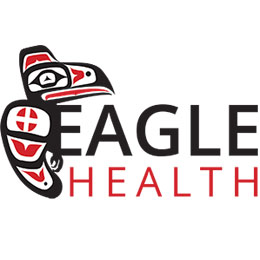Ergonomics, the study of the relationship between people and their work environment, plays a crucial role in ensuring employees’ safety, comfort, and productivity. By implementing ergonomic principles in the workplace, organizations can reduce the risk of work-related injuries and enhance employee performance. This white paper will discuss the importance of ergonomics in the workplace, the benefits of incorporating ergonomic strategies, key areas to focus on when implementing ergonomic initiatives, and the services offered by Eagle Health to support organizations in achieving their ergonomic goals.
Understanding Ergonomics:
At its core, ergonomics aims to design workspaces, equipment, and tasks to fit the needs of individual employees rather than requiring employees to adapt to an unsuitable environment. By considering factors such as body mechanics, workstation layout, and environmental conditions, organizations can create a work environment that reduces physical strain, minimizes the risk of injury, and supports overall employee well-being.
The Benefits of Implementing Ergonomic Strategies:
- Reduced work-related injuries: Ergonomic interventions can significantly decrease the incidence of musculoskeletal disorders (MSDs) and repetitive strain injuries (RSIs), common among employees who perform repetitive tasks, engage in heavy lifting, or work in awkward postures. By minimizing the risk of these injuries, organizations can reduce absenteeism, workers’ compensation costs, and employee turnover.
- Increased productivity: An ergonomically designed workspace enables employees to work more efficiently and comfortably, leading to increased productivity. When employees can perform tasks without experiencing discomfort or strain, they are more likely to maintain focus and complete tasks more quickly.
- Improved employee satisfaction: Employees who work in an ergonomically designed environment are more likely to feel valued and supported by their organization. This can lead to increased job satisfaction, higher employee engagement, and better overall morale.
- Enhanced workplace safety culture: By prioritizing ergonomics, organizations demonstrate a commitment to employee safety and well-being. This fosters a culture of safety in which employees are more likely to take an active role in identifying and addressing potential hazards.
Key Areas to Focus on When Implementing Ergonomic Initiatives:
- Workstation design: Ensure that workstations are designed to support proper posture and minimize physical strain. This includes selecting appropriate chairs, desks, and monitors and providing adjustable equipment to accommodate individual needs.
- Task design: Evaluate work tasks to identify areas where ergonomic improvements can be made. This may involve modifying work processes, providing additional tools or equipment, or adjusting work schedules to reduce repetitive motions and minimize physical strain.
- Environmental factors: Consider environmental factors such as lighting, temperature, and noise levels when designing a workspace. An ergonomically sound environment should promote comfort, minimize distractions, and reduce the risk of injury.
- Training and education: Provide ongoing training and education for employees on the principles of ergonomics and the importance of maintaining proper body mechanics. This can help ensure that employees understand how to work safely and efficiently.
Eagle Health’s Ergonomic Services:
Eagle Health offers a range of ergonomic services to support organizations in creating safe, comfortable, and productive work environments. These services include:
- Ergonomic assessments: Our team of experts can evaluate your current workplace environment and identify areas where ergonomic improvements can be made. This may involve reviewing workstation layouts, equipment, and work processes to ensure they align with best ergonomics practices.
- Ergonomic training: We provide comprehensive training programs to educate employees and managers on the principles of ergonomics and the steps they can take to reduce the risk of injury. Our training sessions cover topics such as proper body mechanics, workstation setup, and the use of ergonomic equipment.
- Ergonomic program development: Our team can work with your organization to develop a customized ergonomic program tailored to your specific needs. This may include creating policies and procedures, establishing workstation setup and equipment selection guidelines, and implementing ongoing evaluation and monitoring processes to ensure continued success.
- Ergonomic equipment recommendations: Based on our assessments and your organization’s unique requirements, we can provide recommendations for ergonomic equipment and tools to enhance employee comfort, reduce the risk of injury, and improve productivity.
Ergonomics is vital in creating a safe, comfortable, and productive workplace for employees. By implementing ergonomic strategies, organizations can reduce work-related injuries, increase productivity, and enhance employee satisfaction. Eagle Health is dedicated to helping organizations achieve their ergonomic goals by offering comprehensive services, including assessments, training, program development, and equipment recommendations. By partnering with Eagle Health, your organization can demonstrate its commitment to employee well-being and foster a thriving work environment.
































